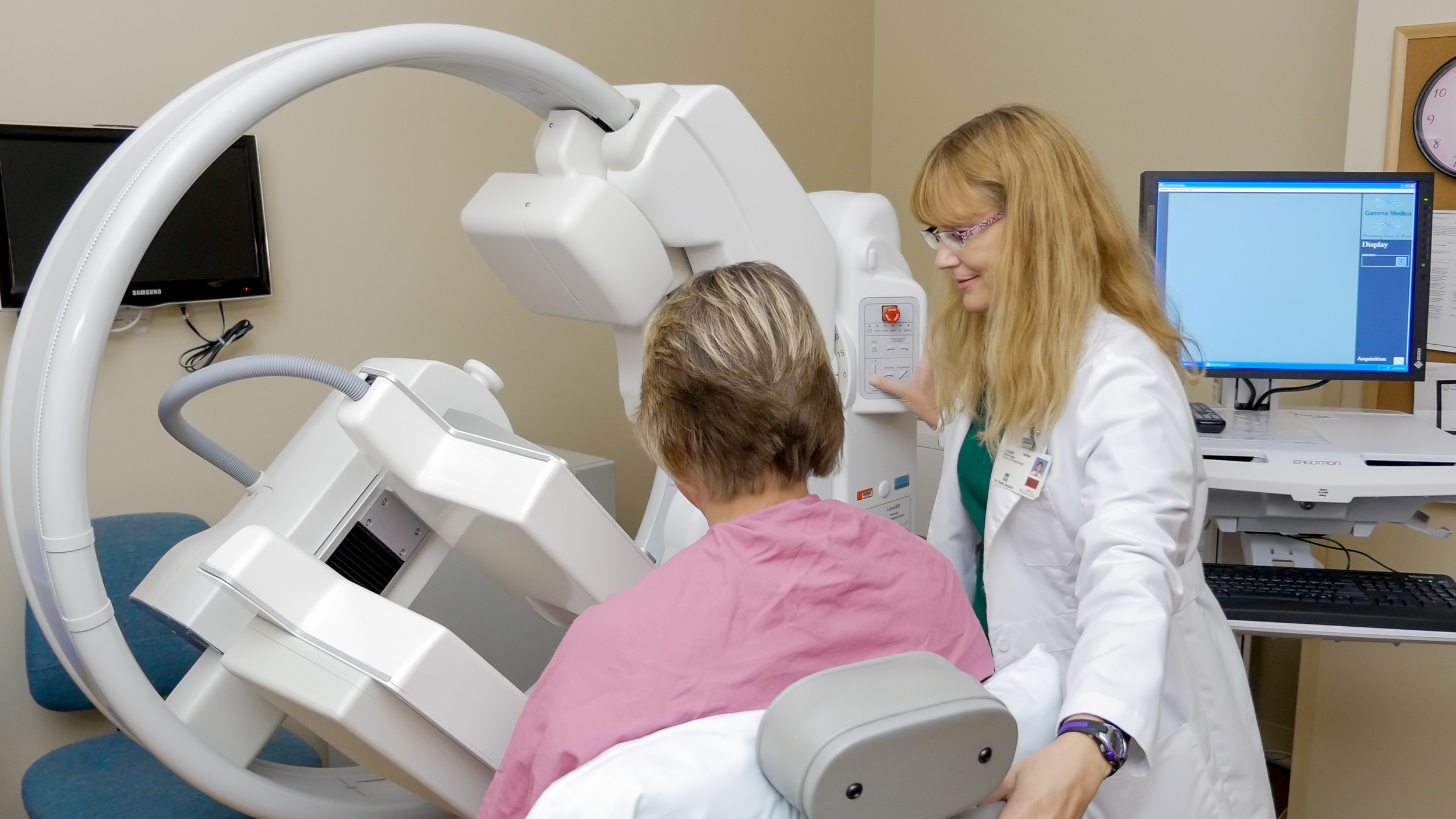New tech weapon aids in war on breast cancer
Mercy first in NYS to acquire imaging tool
Detecting breast cancer at its earliest stage has long challenged doctors. Now, new state-of-the-art technology could make that discovery much easier and save more lives.
Mercy Medical Center, in Rockville Centre, announced at a news conference on Feb. 15 that it will become the first hospital in New York state to offer molecular breast imaging, which is reported to increase breast cancer detection by nearly 400 percent.
An MBI machine will be installed at the hospital in April, at a cost of $450,000. Before this acquisition, patients who requested this method had to go to Middlesex Hospital in Middletown, Conn.
“Our hope is that eventually, with the early detection, we can eliminate mortality deaths due to breast cancer, and that would really be an amazing goal,” said Dr. Conellia Ha, Mercy’s radiology director.
Molecular breast imaging is a secondary or diagnostic imaging tool that is used in addition to a mammogram. It provides a detailed image of what is happening inside the breast at the molecular and cellular levels. During an MBI exam, the patient receives a small injection of the tracer drug Tc-99m Sestamibi, a commonly used, short-acting radiopharmaceutical. Immediately after the injection, the patient is imaged with a special scanner that looks and operates like a mammography device.
The radiopharmaceutical accumulates in cancerous areas, and is captured on the MBI images, showing clear differences between the tumors and surrounding tissue.
The process can also be used to determine the effectiveness of chemotherapy, as a pre-surgical planning tool or after a lumpectomy to confirm that all of the cancerous tissue has been removed.
“It’s absolutely innovative,” Ha said. “There have been other procedures that are similar to this in the past, where we’ve tried to use greater tracers to detect breast cancer that have really not been effective, because in order to get enough of an image, the dose had to be too strong, so people were really shying away from that.”
According to hospital officials, breast cancer is the second-leading cause of cancer deaths among women. A woman born in the United States has a one in eight chance of developing invasive breast cancer during her lifetime, and there are more than 3.1 million breast cancer survivors in the country.
Six of those women, mostly from the South Shore area, attended the news conference in support of the technology, including Rockville Centre’s Pam McLoughlin, Bernice Jamison-Turner, of West Hempstead; Fay McKeittron and Rechilda Icmat, of Valley Stream; and three-time breast cancer survivor Geri Barish, a Baldwin resident and the executive director of the Hewlett House.
“I think it’s really important to say congratulations to Mercy,” Barish said. “They sought out the machines in Connecticut, and I think that that is such a phenomenal thing to do. This is so important.”
Icmat, 44, works at Mercy, and was sent to Middlesex by Ha after a third biopsy detected cancer last year. She is now cancer-free.
“It’s better than the mammogram,” Icmat said of the MBI procedures. “It only compresses your breast once, and you get to be in one position for 15 minutes.”
McLoughlin, 67, was diagnosed in 2014 after a routine mammogram detected a lump in her right breast. She had a biopsy and two lumpectomies before the surgeon decided to remove the breast.
“[My husband and I have] lived in the village for almost 40 years, and we’ve been very involved in supporting Mercy,” she said. “For people like myself who have very dense [breast] tissue, this is fantastic. It’s hard to see through all that stuff.”
Jamison-Turner, 72, who has been treated at Mercy for breast cancer since her first diagnosis in 2011, said the hospital’s new technology is a welcomed prospect.
“If the next person can go without the pain and discomfort of the mammogram and get a better diagnosis, then I’m all for it,” she said, adding that she always dreaded the discomfort. “For those of us who are classified with calcification of the breast, it’s a particularly painful experience.”
Breast calcifications are calcium deposits within breast tissue that can appear as white specks — similar to grains of salt — or tight clusters with irregular shapes. Most times, they are benign. In Jamison-Turner’s case, they were not.
She has since had a bilateral mastectomy, and went through extensive physical therapy so that she could enjoy many of her favorite activities, such as bowling.
“I always tell my friends that bowling is the 11th commandment,” she said.
Rossana Weitekamp contributed to this story.

 39.0°,
Fair
39.0°,
Fair 







